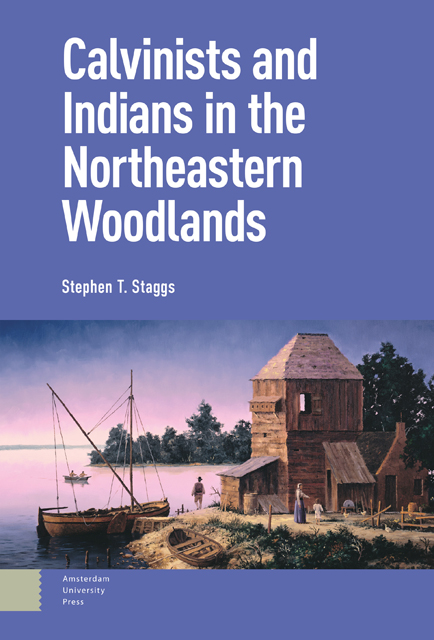Book contents
- Frontmatter
- Contents
- Acknowledgements
- Abbreviations
- List of Figures
- Notes on Usage
- Introduction
- 1 “Gentiles by Nature,” 1566–1626
- 2 “So That the Fullness of the Gentiles Might Gradually Come In,” 1627–1642
- 3 “A Church and Community among the Christians and the Blind Gentiles,” 1642–1652
- 4 “We, with God’s Help, Hope to Bring the Barbarous Tribes to Devotion,” 1652–1660
- 5 “Who Gave Jacob for a Spoil and Israel to the Robbers?” 1660–1664
- 6 “A Gentile Woman, Karanondo, … Now Called Lidia,” 1664–1750
- Conclusion
- Appendix A Dutch References to Indians: 1609–1664
- Appendix B Indian Baptisms, Professions of Faith, and Marriages in the Dutch Reformed Churches of New York: 1690–1750
- List of Archival Sources
- Bibliography
- Index
Appendix B - Indian Baptisms, Professions of Faith, and Marriages in the Dutch Reformed Churches of New York: 1690–1750
Published online by Cambridge University Press: 17 October 2023
- Frontmatter
- Contents
- Acknowledgements
- Abbreviations
- List of Figures
- Notes on Usage
- Introduction
- 1 “Gentiles by Nature,” 1566–1626
- 2 “So That the Fullness of the Gentiles Might Gradually Come In,” 1627–1642
- 3 “A Church and Community among the Christians and the Blind Gentiles,” 1642–1652
- 4 “We, with God’s Help, Hope to Bring the Barbarous Tribes to Devotion,” 1652–1660
- 5 “Who Gave Jacob for a Spoil and Israel to the Robbers?” 1660–1664
- 6 “A Gentile Woman, Karanondo, … Now Called Lidia,” 1664–1750
- Conclusion
- Appendix A Dutch References to Indians: 1609–1664
- Appendix B Indian Baptisms, Professions of Faith, and Marriages in the Dutch Reformed Churches of New York: 1690–1750
- List of Archival Sources
- Bibliography
- Index
Summary
In order to assess the relative success of the mission work of the predikanten (preachers) among the Indians of the Northeastern Woodland, it is essential to determine how many Indians were baptized, married, made profession of faith, and became communicant members of the Dutch Reformed churches in Nieuw Nederland (New Netherland) and New York between 1609 and 1750. The purpose of table B.1 is to provide a measure of the success of the predikanten in grafting Gentiles onto the proverbial olive tree of Reformed Christianity. The data was gleaned from the available baptism and marriage records of the historic Dutch Reformed churches in New York. The bulk of the data comes from the Extracts from the Doop-Boek, or Baptismal Register of the Reformed Protestant Dutch Church in Schenectady, N. Y., which was published in Dutch in 1864, the Records of the Reformed Dutch Church Albany, New York, 1683–1809, which were published in 1904, the Marriage Records of the Reformed Protestant Dutch Church of Schenectady, N.Y., which were edited by Charlotte Luckhurst in 1917, and the Baptismal and Marriage Records of the Old Dutch Church of Kingston, Ulster County, New York, 1660–1809, which were translated and edited by Roswell Hoes in 1997.
It is important to note that in orthodox Calvinism, children born into the Reformed Church community were considered innate citizens who were already grafted into the kingdom of God. They thus had the right to be baptized as infants as a sign of their membership in the community of Christ. However, children were not able to partake of the Lord’s Supper (Eucharist), which was preserved for those who had made profession of faith in which the individual professed that Jesus Christ was the son of God sent to redeem the world and that the Bible was the word of God, affirmed their union with Christ and with his church, and promised to do all they could to strengthen their love and commitment to Christ by sharing faithfully in the life of the church and honoring and submitting to its authority.
- Type
- Chapter
- Information
- Calvinists and Indians in the Northeastern Woodlands , pp. 271 - 288Publisher: Amsterdam University PressPrint publication year: 2023

